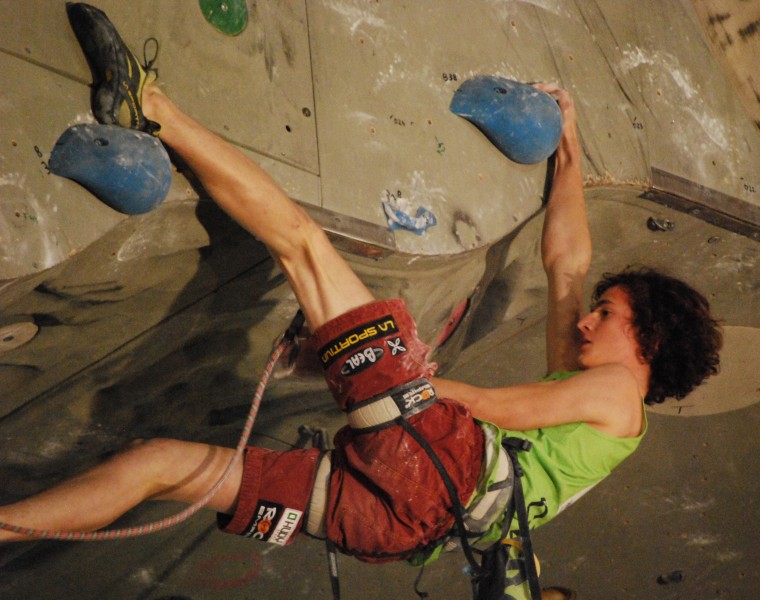
Adam Ondra at the International Federation of Sport Climbing (IFSC) Lead World Cup in 2009.
Adam Ondra, a 20-year-old from the Czech Republic, is regarded as one of the best boulderers in the world. A recent short film that was released by Reel Rock is making its way around, showing the amount of detail and intensity that is required in each of his climbs.
Ondra began climbing at age six by the influence of his parents, who are also climbers. He is recognized for winning the 2010 International Federation of Sport Climbing (IFSC) Bouldering World Cup, where he became the first athlete in history to win in both disciplines—lead and bouldering. In bouldering, problems are assigned technical grades.
In an interview with Mountains and Water last year, Ondra explained why he makes quick decisions when coming to a challenging part of the rock.
“The key is efficiency. In most cases, you are more likely to end up with the onsight ascent in the bag if you do something quickly with complicated sequence than getting stuck in finding the ‘right’ way and wasting an enormous amount of power,” he said. “It’s important to analyze terrain above just as much as you need, not less, not more. But at the same time, it has to be completely natural. Since the analysis and decision of terrain above is driven by instinct and experience, it has nothing to do with intelligence. You can’t acquire this ability from anything else than climbing.”
The short film below that was released by Reel Rock features Ondra taking on two intense boulder problems. The first, Terranova, was discovered by Ondra in November 2011 at Moravsky Kras in the Czech Republic. One month after he successfully climbed Terranova, he made the only repeat climb of Gioia that was discovered and climbed in 2008 by Christian Core in Varazze, Savona, Italy. Gioia is currently the only known 8C+ boulder problem in the world.
Several of the comments on the YouTube video mocked the loud yelling and grunting Ondra let out during his climbs. While some people choose to climb in complete silence, other than the natural sounds surrounding them, others feel no shame in their vocal releases of frustration, anxiousness, or pain during the climb. According to an article posted in June on Outdoor Research that questioned, “Does yelling help you climb harder?”—the answer is yes. Junji Takano, a Japanese health researcher, studied this relationship in his article How Grunting or Yelling Can Improve Your Performance. He said making noise while exercising can help release tension, synchronize breathing, increase focus, increase core stability, and increase strength.
“Grunting or yelling changes your body chemistry. It triggers your brain to release adrenaline, and produce higher heart rate, increased blood flow, as well as psychological boost…Loud grunting also activates the muscles in your back and abdomen, which can increase your overall power for throwing, hitting, swinging, jumping, or punching,” Takano said in the article.
In response to those who have commented on his yelling while climbing, Ondra told Mountain and Water, “Yeah, I shriek when I am climbing on my absolute limit, but never shriek in the warm up or when trying the moves. No matter how terrible it might sound, it helps me personally to obey the classic rule—making a move when the air goes out of the lungs.”
The author of the Outdoor Research article, Lindsey Kunz, said after giving in to the natural reflexes she felt to release noises while climbing, she noticed a huge difference in her performance. She described how she realized she was holding her breath during more challenging climbs, which ensured she wouldn’t disturb anyone else, but in turn deprived her muscles of the necessary oxygen.
“Take the time to listen to other climbers, especially strong ones, and pay attention to the noises they make,” Kunz wrote. “You don’t have to scream like Adam Ondra. Just remember that timing is key for making your grunt, yell, or whatever count. Doing so just before your move versus during your move makes it far more effective.”
Image from Svíčková on the Wikimedia Commons
 Your Privacy Choices
Your Privacy Choices
 The
The